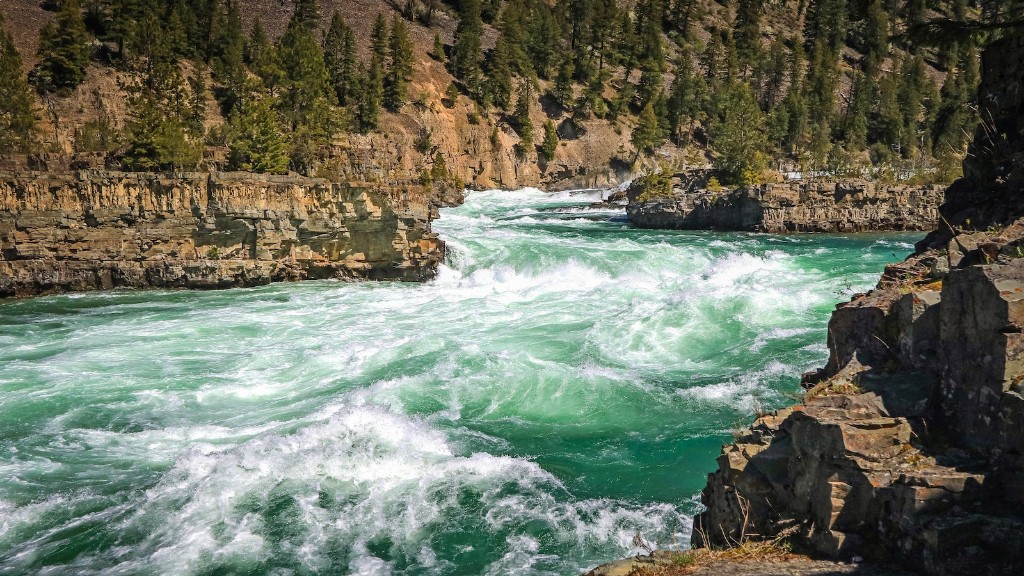What is Meandery?
Meandery is a special feature of rivers that cause them to flow in a sinuous course. Every meandering river has long stretches of forking, branching, and turning flow. As a result, the river meanders in its course dipping back and forth from side to side, producing broad curves. River meanders are patterned features; they exist as a result of natural erosion and sedimentation processes, and are constantly subject to modification through fluvial processes.
The Mississippi River Meander
The Mississippi River is an iconic meandering river. It flows for about 3,780 km from its source in Minnesota to the Gulf of Mexico. This river does not only meander but its flood plain is also wide allowing it to frequently migrate sideways; because of the flat topography of its floodplain, sediment moves in and rebuilds the banks. By shifting sideways, it creates new shallow channels, this process is called shifting meanders.
What Causes River Incision and Meandering?
River incision and meandering is one of the most important fluvial processes. It is caused by factors such as discharge, sediment load, volume of water, steepness of gradient and sediment size. As the velocity of water increases, it overturns the sediment on its bed generating more force and consequently more erosional potential which can lead to wider and deeper channels. Hence, incision is realized in the river course.
Water-sediment Interaction
The Mississippi River is continuously interacting with the sediment it carries in its flow. Due to high velocity and turbulence, sediment is picked up and transported downstream. As it moves, the sediment creates eddies and ripples as well as gentle curves. Each element of the bed form interacts with each other, helping the river move more freely. These erosional and depositional processes benefits the river by creating new structures that help it navigate the obstacles in its course. This feature that helps it meander and shift its course with time, is called the water- sediment interaction.
The Anatomy of the Meander
The meanders of the Mississippi River present distinct characteristics. The river curves have highly erosive outer banks and deeply incised inner banks, with fine sediment accumulating in the inner bends and coarse sediment in the outer banks. A point bar is created from the sediment deposited between two meanders. As the river erodes its outer bank, the point bar migrates downstream, while a stretch of land, the cut bank, is created upstream. The cut and point bars move the entire meander downstream. Its course can become longer, more bent, and more sinuous over time.
Humans Learn From Meandering Rivers
The meandering rivers of the world are like outdoor laboratories for scientists, allowing them to monitor the evolution of fluvial geomorphology. Humans have copied the patterns of meandering rivers to create more efficient designs of reservoirs, canals and channels. Engineers take the principles of meandering and apply them when designing efficient water courses with minimum environmental impact and cost.
The Impacts of River Meandering on Human Settlements
When rivers meander it can cause several problems for nearby human settlements, especially for settlements located in the paths of migrating meanders. A classic example is the Italian town of Ficuzza, which was established near a river in 1445. As the river meandered over the centuries it changed direction frequently, until eventually it encircled the town. Nowadays the town is an island in the Sicilian countryside.
Implications for Supporting Healthy River Ecosystems
River meanders play an important role in the health of riverine ecosystems. A river’s sinuous course helps to move nutrient-rich sediment from one point to another, spreading it along the riverbed. This helps to restore and nurture existing ecosystems, as well as maintain the ecological balance of a river. Meandering also helps to slow down the rate of flow, which can reduce the energy of the river and consequently, its erosional and depositional power.
The Role of River Meandering in Mitigating Natural Hazards
River meandering has another important function – it helps to mitigate natural hazards. Its way of transporting sediment, as well as preventing excessive erosion and deposition, helps to reduce the risk of flooding and other natural disasters. The Mississippi River’s path of meandering helps to reduce the local and downstream impacts of floods and droughts, which can lead to destruction of property and take lives.
Preserving the Mississippi River’s Meanders
Preservation of river meanders is important in order to keep rivers healthy and mitigate natural hazards. The Mississippi River is one of the most contentiously regulated rivers in the world. Laws such as the Clean Water Act, the Water Bank Program, and the Watershed-based Plan provide management and protection guidance for the river from threats such as sedimentation, erosion and pollution. These regulations aim to protect the meandering course of the river and ensure it can flourish for many years to come.
The Relationship of River Meandering to the Momentum of Fluid Motion
The concept of water-sediment interaction is key to understanding how the momentum of the Mississippi River’s fluid motion causes its meandering course. When two meanders are adjacent to each other, the water’s flow is disturbed, creating a zone of higher pressure on the inside bank, increasing the water’s scouring power. As particles of sediment on the outside of the meander are combined with a larger fluid particle, they turn towards the lower pressure zone close to the inside bank, undermining and eroding the outside bend of the meander. This process continues, with the whirlaway current eroding the outside bend, the drag current near the inside bend adding sediment, and the loosened sediment then winding downstream.
The Correlation Between River Meandering and Channel Roughness
The Mississippi River’s meanders affect its channel roughness. As the river’s meanders erode and redevelop its banks, the diameter of curved bends reduces, causing increased turbulence and raising frictional resistance. This in turn leads to lower flow velocities, which again increases the volume of sediment it can carry. Thus, variations in the channel roughness are intimately related to the shifting of the meandering pattern, ever reduplicating and varying its flow characteristics. In this way, the presence of meanders increases the amount of sediment being carried in the river, which can contribute to further widening and deepening of the riverbed, thereby continuously creating new meanders.
The Role of Bankfull Width and Width Variability in Sustaining River Meanders
The ability of a river to meander is influenced by two main factors, the bankfull width, i.e. the width of the river corresponding to the discharge at which the river starts eroding its banks, and the bankfull width variability which is responsible for the development of meanders over time. Studies indicate that if the bankfull width is under 150 m, then meandering can be sustained as the river is too narrow for the momentum of its fluid motion to cause significant erosive activity on its banks. On the other hand, a wide bankfull width, i.e. over 200 m, suggests that the river will meander and cause the development of side curves.
The Role of Bed Material Thickness in the Formation of River Meanders
The thickness of the river’s bed material is an important factor in determining the extent of meandering. If the river’s bed material is thicker than 1/3 of the bankfull width, the momentum of the fluid motion is insufficient to shift the sediment particles and erode the banks. On the other hand, if the bed material is thinner than 1/3 of the bankfull width, then it can be easily shifted and the river will meander. As a general rule, if the bankfull width is greater than 100 m, then most materials of thickness 1 m or less will guarantee the formation of meanders in the river.
Evaluating the Efficiency of Current River Regulation in the Mississippi River
The Mississippi River has been regulated since 1935 with the passage of the Flood Control Act, aimed at controlling floods and maintaining navigation. Current regulations involve removal of barriers such as levees, dams, and other control structures, but their actual efficiency is difficult to assess. In order to evaluation their efficiency, more research needs to be conducted on whether in-channel regulation and sediment bypass facilities are sufficient to keep a balance between maintaining navigation and regulating meandering over the long term.



